Egypt is a land of ancient wonders, and one of the most awe-inspiring is the Karnak Temple. This vast complex of temples, chapels, and halls covers over 200 acres and was built over a period of 2,000 years. It is the largest ancient religious site in Egypt and a testament to the ingenuity and dedication of the ancient Egyptians. In this article, we will explore the history, significance, and architecture of the Karnak Temple, and discover the secrets and mysteries that lie within.
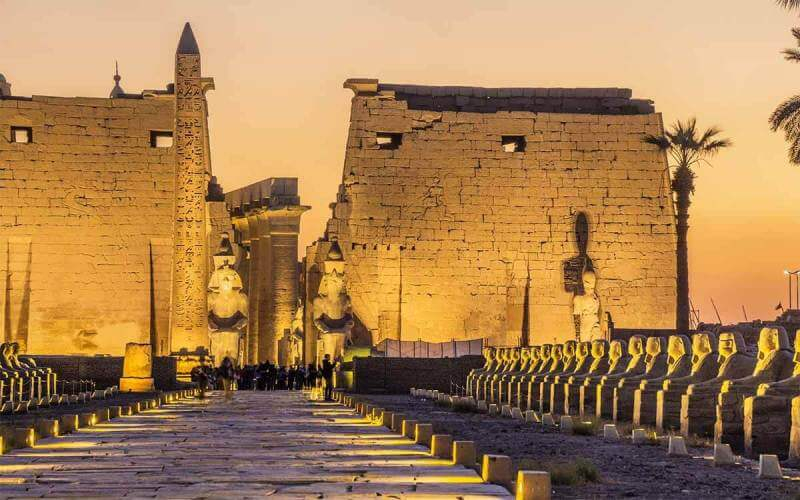
History of the Karnak Temple
The Karnak Temple was built over a period of 2,000 years, beginning in the Middle Kingdom and ending in the Ptolemaic period. It was dedicated to the Theban triad of gods: Amun, Mut, and Khonsu. The Theban triad was a powerful religious force in ancient Egypt, and the Karnak Temple was the center of their worship. The earliest structures at the Karnak Temple date back to the Middle Kingdom, when the pharaohs built small shrines to the gods. These were gradually expanded over the centuries, with each new pharaoh adding their own contributions to the complex. The most famous pharaoh associated with the Karnak Temple is Ramses II, who built the Great Hypostyle Hall and many other structures within the temple complex. The Karnak Temple was also the site of many important religious festivals and ceremonies. The most important of these was the Opet Festival, which celebrated the union of Amun and his wife Mut. The festival was held annually and involved a procession of the gods from the Karnak Temple to the Luxor Temple.
The significance of the Karnak Temple
The Karnak Temple was the most important religious site in ancient Egypt, and it played a crucial role in the religious and political life of the country. It was believed to be the dwelling place of the gods, and the pharaohs who built and expanded the temple complex were seen as their earthly representatives. The Karnak Temple was also a symbol of the power and wealth of ancient Egypt. The vast size of the complex and the elaborate decorations and carvings on the walls and columns were a testament to the wealth and resources of the pharaohs who built it. Today, the Karnak Temple is a UNESCO World Heritage Site and a major tourist attraction in Egypt. It is a testament to the ingenuity and creativity of the ancient Egyptians, and a reminder of the rich cultural heritage of this remarkable country.
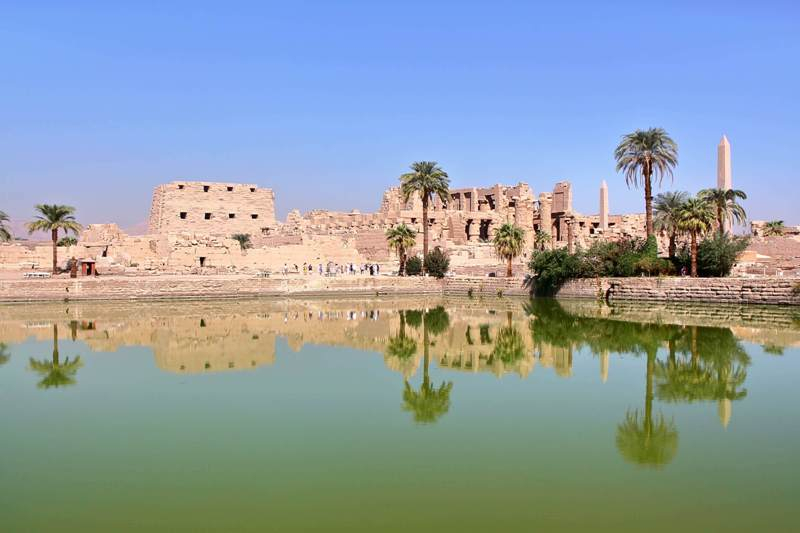
The architecture of the Karnak Temple
The Karnak Temple is a vast complex of temples, chapels, and halls, covering over 200 acres. It is divided into four main areas: the Precinct of Amun-Re, the Precinct of Montu, the Precinct of Mut, and the Temple of Amenhotep IV. The most impressive structure within the Karnak Temple is the Great Hypostyle Hall. This hall is 54,000 square feet in size and contains 134 massive columns, each over 70 feet tall. The columns are decorated with intricate carvings and hieroglyphs, depicting scenes from Egyptian mythology and history. Another impressive feature of the Karnak Temple is the Sacred Lake. This lake was used for religious rituals and ceremonies, and was believed to be the source of the Nile River. The lake is surrounded by temples and chapels, and it is a peaceful and serene spot within the bustling complex.
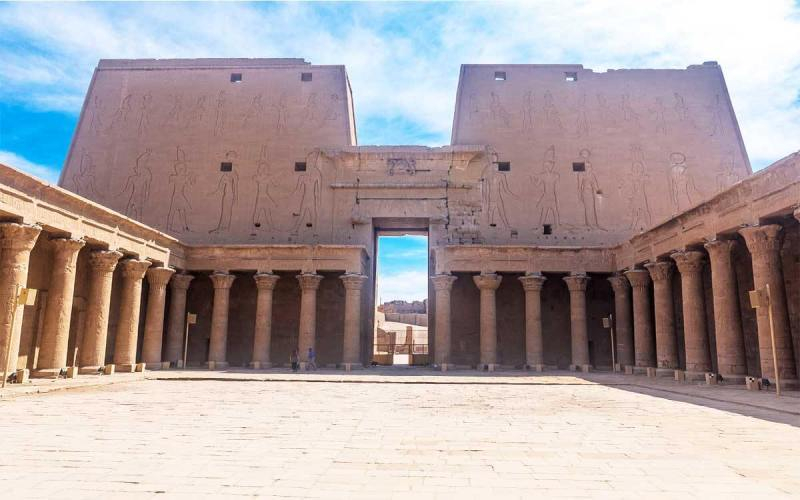
The Great Hypostyle Hall
The Great Hypostyle Hall is one of the most impressive structures within the Karnak Temple complex. It was built by Seti I and Ramses II in the 13th century BC, and it is one of the largest and most elaborate buildings of its kind in the world. The hall is 54,000 square feet in size and contains 134 massive columns, each over 70 feet tall. The columns are arranged in rows, with 12 columns in the center aisle and 122 columns in the side aisles. The columns are decorated with intricate carvings and hieroglyphs, depicting scenes from Egyptian mythology and history. The Great Hypostyle Hall was used for religious ceremonies and gatherings, and it was a place of great importance in ancient Egypt. It remains one of the most impressive structures in the Karnak Temple complex, and a testament to the architectural and artistic skills of the ancient Egyptians.
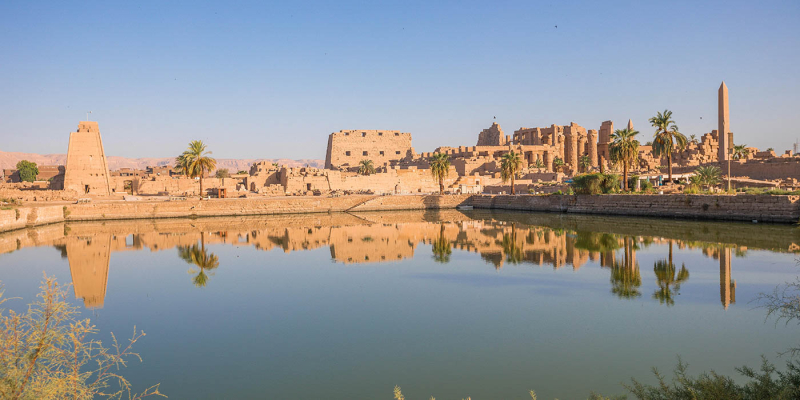
The Sacred Lake
The Sacred Lake is another impressive feature of the Karnak Temple complex. It is a man-made lake that was used for religious rituals and ceremonies, and was believed to be the source of the Nile River. The lake is surrounded by temples and chapels, and it is a peaceful and serene spot within the bustling complex. Visitors can stroll along the banks of the lake and admire the reflections of the temple columns in the still water. The Sacred Lake was an important part of the religious life of ancient Egypt, and it remains a fascinating and beautiful feature of the Karnak Temple complex.
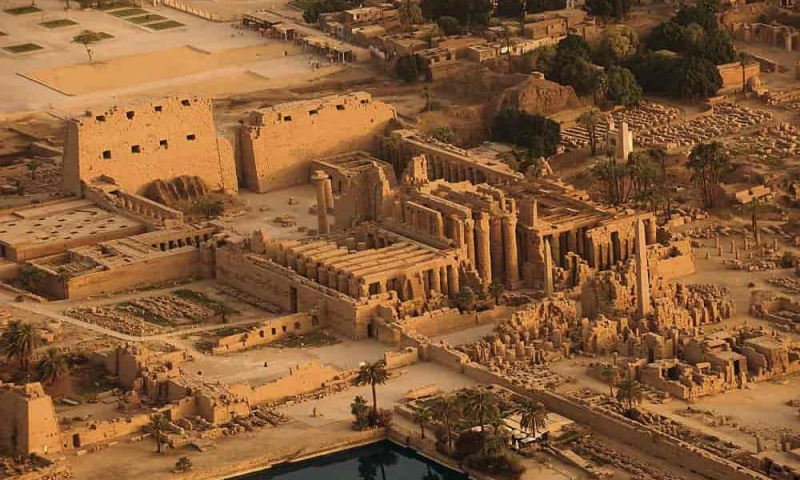
The Karnak Temple and Egyptian mythology
The Karnak Temple is rich in symbolism and mythology, and it is filled with depictions of gods, goddesses, and mythical creatures. The temple was dedicated to the Theban triad of gods: Amun, Mut, and Khonsu.
Amun was the primary god worshipped at the Karnak Temple, and he was believed to be the king of the gods. He was often depicted with a ram's head, and he was associated with fertility and creation. Mut was the wife of Amun, and she was worshipped as a mother goddess. She was often depicted with the head of a vulture, and she was associated with motherhood and protection. Khonsu was the son of Amun and Mut, and he was worshipped as a moon god. He was often depicted with the head of a falcon, and he was associated with healing and protection. The depictions of these gods and goddesses, along with other mythical creatures and symbols, can be seen throughout the Karnak Temple complex. They are a fascinating insight into the religious beliefs and mythology of ancient Egypt.
The Karnak Temple in modern times
Today, the Karnak Temple is a major tourist attraction in Egypt, and it is visited by thousands of people every year. The temple complex has been carefully restored and preserved, and it remains a fascinating and awe-inspiring testament to the creativity and ingenuity of the ancient Egyptians. Visitors to the Karnak Temple can explore the various temples, chapels, and halls within the complex, and admire the intricate carvings and decorations on the walls and columns. They can also enjoy a peaceful stroll around the Sacred Lake, and marvel at the massive columns of the Great Hypostyle Hall. The Karnak Temple is a must-see destination for anyone interested in ancient history and culture, and it is a reminder of the rich cultural heritage of this remarkable country.
Conclusion
The Karnak Temple is a marvel of ancient architecture and art, and a testament to the creativity and ingenuity of the ancient Egyptians. It is the largest ancient religious site in Egypt, and it played a crucial role in the religious and political life of the country. From the massive columns of the Great Hypostyle Hall to the peaceful shores of the Sacred Lake, the Karnak Temple is a wonder to behold. It is a must-see destination for anyone interested in ancient history and culture, and a reminder of the rich cultural heritage of this remarkable country.